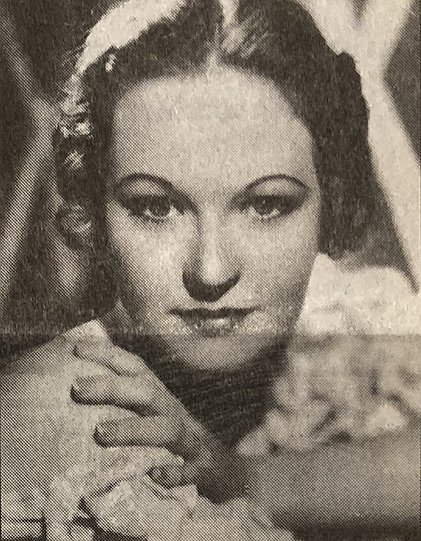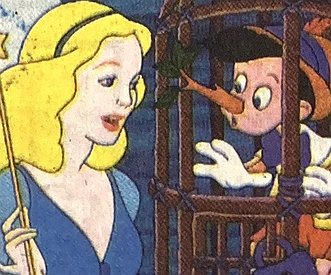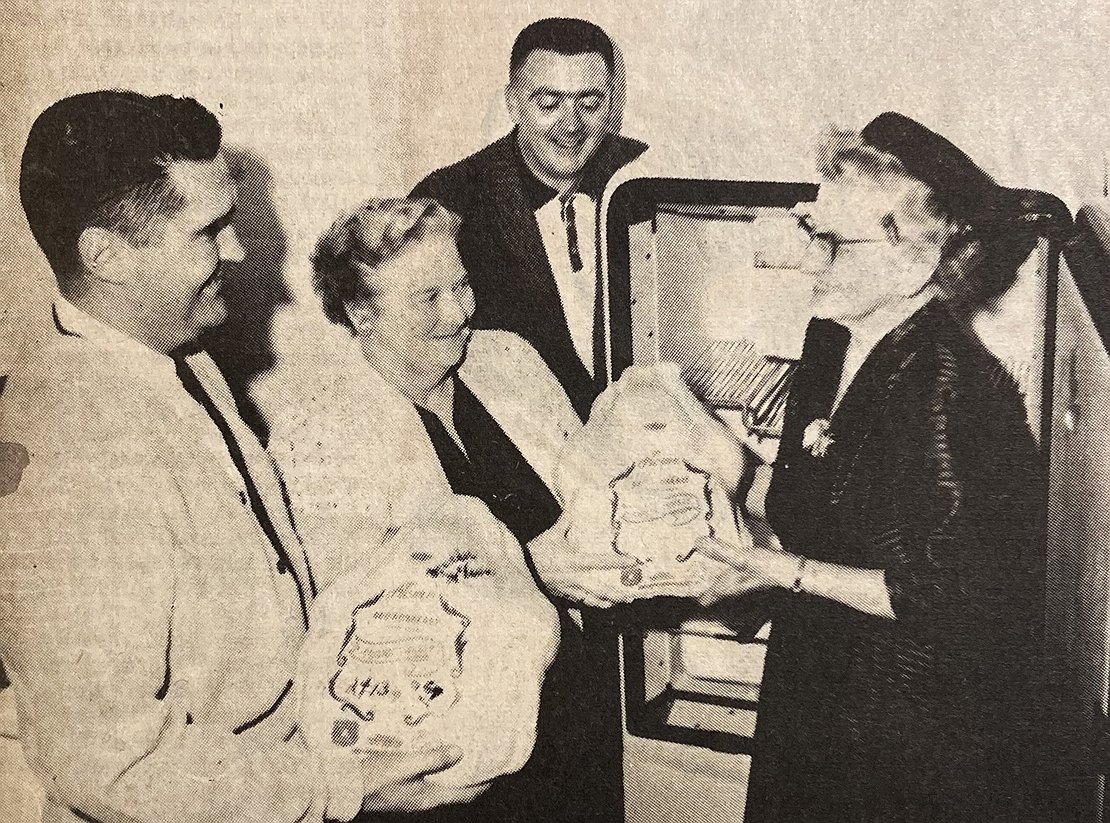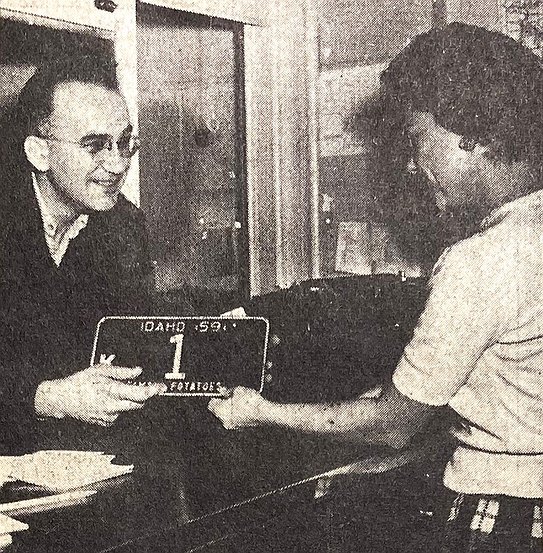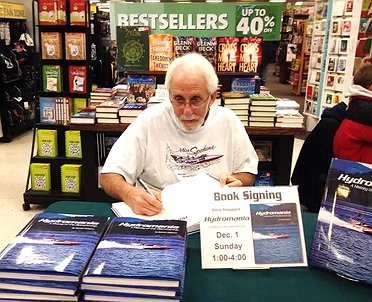HUCKLEBERRIES: Hello, hello
Coeur d’Alene had its Alexander Graham Bell moment 70 years ago when Publisher Burl Hagadone of the Coeur d’Alene Press dialed KNEW radio in Spokane.
Bell, as you recall, demonstrated his ability to “talk through electricity” on March 10, 1876, by calling his assistant and saying, “Mr. Watson, come here. I want to see you.”
The Coeur d’Alene Press didn’t report what Publisher Hagadone said to announcer Warren Desmond shortly before midnight Saturday, Nov. 28, 1953.
But the call was historic.
At the stroke of midnight that cold November day, General Telephone switched to a toll dial system after about 50 years of service to the Coeur d’Alene area. For the first time, residents didn’t need an operator to dial long distances to Farragut, Hayden Lake, Plummer, Post Falls, Rathdrum, Worley and Spokane.
Earlier in the day, General Telephone had conducted a test run for the new system when Coeur d’Alene Mayor L.L. Gardner called Spokane Mayor Arthur Meehan. Judging from the expressions of the two men in a Press photo, a cutline said, “Inter-city relations are on a very friendly basis.”
On the downside, General Telephone’s 4,200 local customers were forced to swap their familiar old phone numbers for new five-digit ones with the prefix “Mohawk.” For decades, Coeur d’Alene phone numbers had ranged from one to four digits.
E.R. Whitla, who was starting his 51st year as a practicing attorney in Coeur d’Alene, told the Press that he couldn’t remember a time when his number was something other than 360.
Dr. John T. Wood, a former U.S. congressman, had used the same number since 1905 when he arrived in Coeur d’Alene: 29.
Dr. Wood told the Press: “The number of 29 has been called thousands of times in the last 49 years when Coeur d’Alene and Kootenai County residents needed a physician’s care.”
Strangely, the licensing bureau in the assessor’s office felt the impact of the telephone switch keenly. For years, motorists had asked for license plates to correspond with their telephone numbers. As the new system came online, locals requested plates that matched the new ones.
Coeur d’Alene was among the first cities in the country to change to Custom Toll Dialing — and the first of its class to do so.
Voices Carry
Some of you know that Red Hot Mama Mikki Stevens was the voice actor for teenage Pebbles Flintstone.
But how many know that Evelyn Venable Mohr, the voice of the Blue Fairy in Walt Disney’s 1940 production of “Pinocchio,” lived near Coeur d’Alene for the last year of her life? And that she dismissed her connection to the film fairy who brought the wooden boy to life? She told a local biographer that the job amounted to nothing more than a day and a half in a white room talking into a microphone.
After her death Nov. 15, 1993, the Press interviewed the biographer and Mohr’s daughter, Rosalia Woodson, of Post Falls. They revealed that Mohr was an accomplished Shakespearean actress and a studio star who played opposite Frederic March, Will Rogers, Shirley Temple and W.C. Fields. After her acting career, she finished college and spent 20 years at UCLA teaching the classics.
And, if her own theories and rumors were true, her face served as the model for the torch-bearing woman on the Columbia Pictures logo.
Mohr moved here in 1992 because she was tired of Southern California’s smog and crime.
“She loved it here,” her daughter said. “She liked the four seasons like she used to have growing up in Ohio.”
Time Marches On
You learned about the historic street clock in front of Clark’s Diamond Jewelers here last week — how it has withstood North Idaho winters, volcanic ash, more than a century of use, and traffic accidents.
In the 1920s, according to the Press, a model T rammed into the clock in front of the store at 307 E. Sherman Ave. The clock crashed over the roof of the auto, but the works were safe in their heavy iron base.
In the '50s, the Press reported in a 1983 story, “the clock face had been adorned with wide sheet metal ornaments and neon lights. Several times passing trucks with wide loads snagged the ornaments, spinning the head of the clock around.” Again, no damage was done to the protected works.
Then, on this day in 1968, a 50-mph wind tilted the clock off its base. But for a nearby light pole, the grand clock, then about 60 years old, would have hit the sidewalk and shattered.
Instead, Clark’s timeless treasure keeps on measuring the days of this fine city, one second at a time.
Huckleberries
• Poet’s Corner: Temperatures plunge,/the winter winds stir,/I’ve no more to add/except to say, “Brrrr" — The Bard of Sherman Avenue (“Cold Front Today”).
• Fast & Furbish: As the holidays approached in 1998, the Beanie Baby craze had given way to Furbys, a furry $35 toy with bulging eyes and a garbled soundtrack. They sailed off the shelves here and around the country. Local parents were out of luck, if they hadn’t bought one by Black Friday. The next shipments wouldn't arrive until after Christmas. Today, only the rarest Furbys have value.
• Joy of Giving: Google “patron” — and you may find a photo of Mae McEuen. For her unending donations of time and money to youth recreation, the city named a playfield after her — one that evolved into a $20 million park. But her generosity didn’t stop there. For the annual 1963 Thanksgiving town party at the Eagles, Mae was first in line with free turkeys from McEuen’s Foodliner (now Lakeside Harvest Market at 12th and Sherman).
• Factoid: On Dec. 1, 1958, Charles Lunceford received car license No. 1 for the 11th year in a row by waiting at the courthouse license bureau for 5 ½ hours. He arrived at 3:30 a.m., beating the second in line, Jack Simpson, by five minutes. Said Lunceford: “I’ve never seen so many come so early.”
• In Memoriam? After the JFK assassination 60 years ago, Mayor James McKinnon proposed to build a monument to him. His resolution got unanimous approval from the council. It said in part that the monument would remind residents to “pay everlasting tribute to Kennedy and other presidents who had fallen by an assassin’s hand.” And then? Crickets.
Parting Shot
When Stephen Shepperd retired in 2008 as principal of Kellogg High, he had a big item on his bucket list — chronicle the hydroplane races of his youth (1958-68). That begat five years of research and writing. And that begat: “Hydromania: A History of the Diamond Cup” (373 pages and 116 photos available for $39.95 at the Museum of North Idaho). For some, the mention of hydroplane racing on Lake Coeur d’Alene is fighting words. For others, it’s defending words. Were the Diamond Cup races a celebration of summer life in the magical Lake City of days gone by? Or a reason to riot? Stephen set out to answer those hard questions. And he did. Superbly. Coincidentally, the book was published in 2013, the year the Diamond Cup returned briefly to Lake Coeur d’Alene. Since publication, Stephen has become first-name friends with some of his boyhood idols and ridden in a thunderboat. “It didn’t make the New York Times bestseller list,” Stephen said, “but that was never my goal. I wanted to do something that would cast our community and its people in a positive light.” And he succeeded.
• • •
D.F. (Dave) Oliveria can be contacted at dfo@cdapress.com.
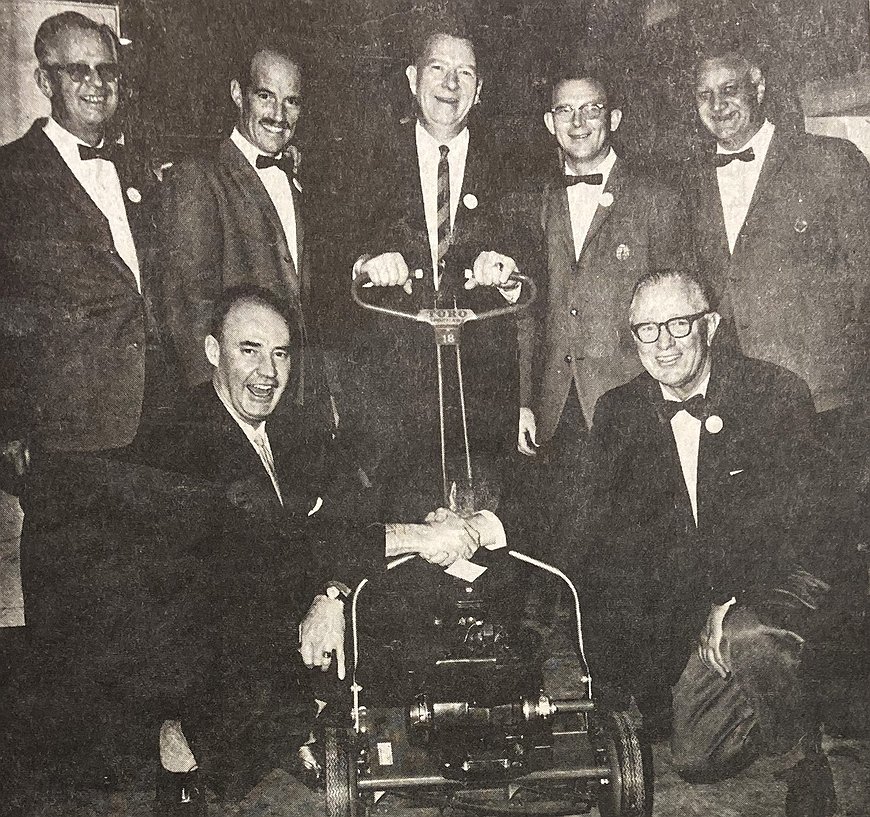 Members of the Athletic Round Table were key to the success of the hydroplane races (1958-68). They sponsored a fundraiser for the races Nov. 18, 1963. Commodore Carter Crimp, front left, is shown congratulating Clive Roberts of Hayden Lake, who won a power mower, one of the evening’s prizes. Knights of the Round Table in the back are, from left, Art Peterson, Bob Nobis, Ron MacDonald, Glenn Durand and Vernon James.
Members of the Athletic Round Table were key to the success of the hydroplane races (1958-68). They sponsored a fundraiser for the races Nov. 18, 1963. Commodore Carter Crimp, front left, is shown congratulating Clive Roberts of Hayden Lake, who won a power mower, one of the evening’s prizes. Knights of the Round Table in the back are, from left, Art Peterson, Bob Nobis, Ron MacDonald, Glenn Durand and Vernon James.








